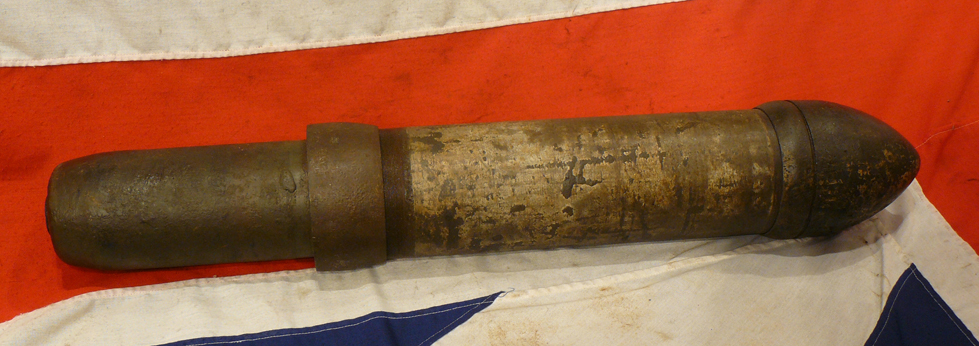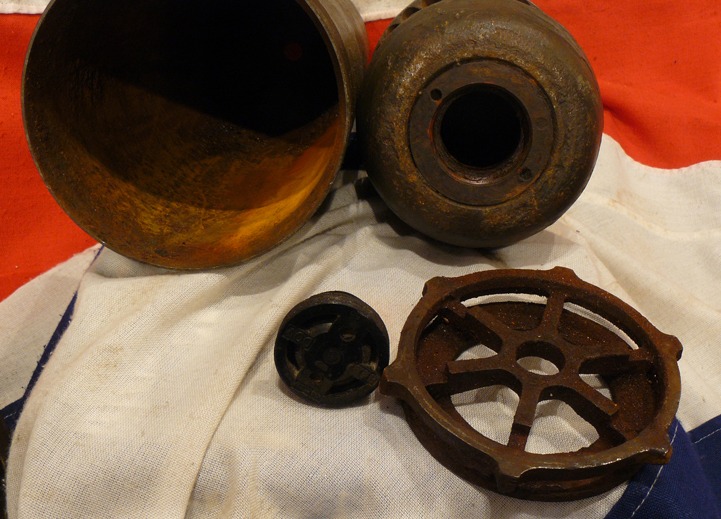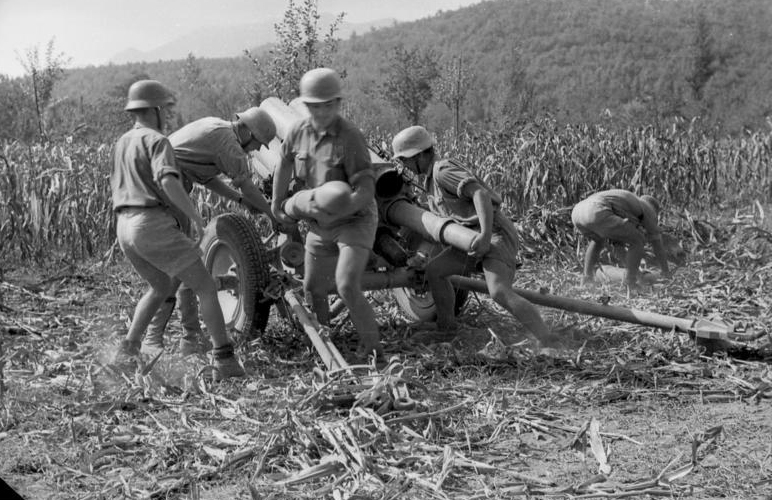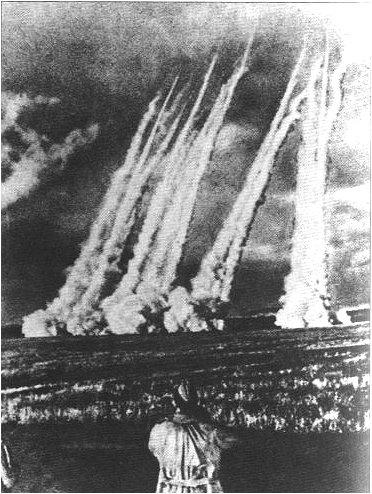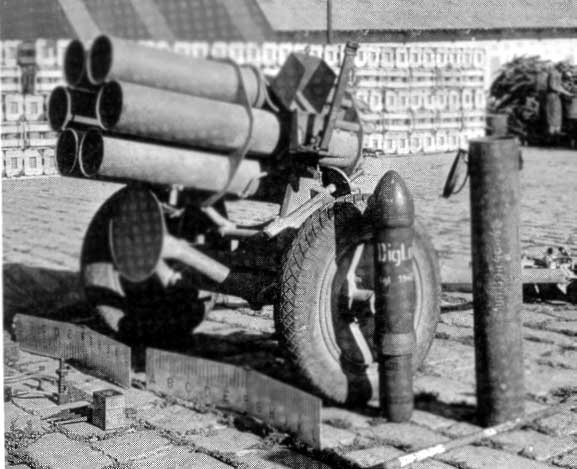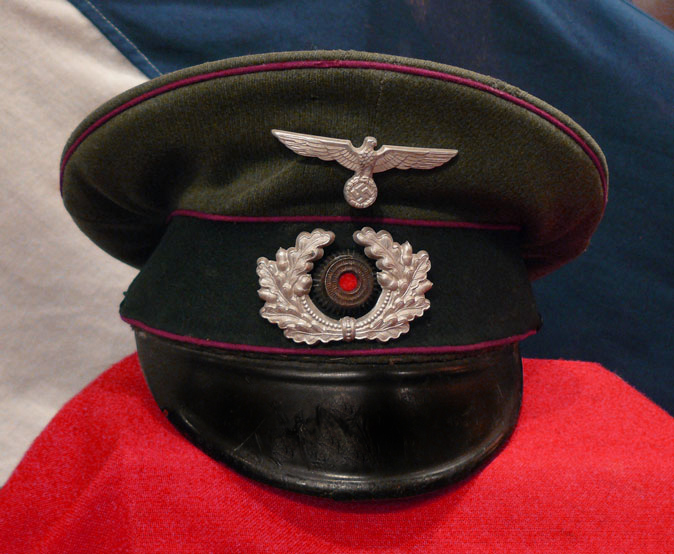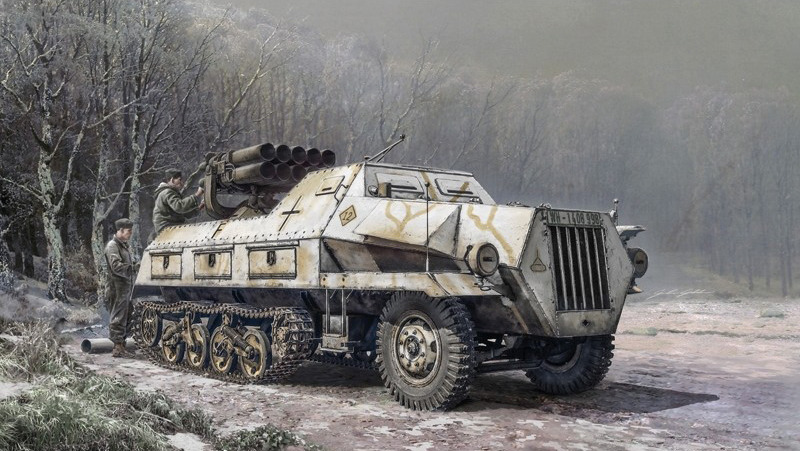A Fabulous and Extremely Scarce, Original, WW2 German Third Reich 'Nebelwerfer 41' Un-Fired or Failed Detonation Rocket. D-Day 'Operation Overlord' Vintage
Empty, inert and perfectly safe. This is one of the very last few we have seen in over 30 years and the first three we sold straightaway, we only have two remaining.
From a superb collection of German ordnance that has arrived. This is one of our last Nebelwerfer Rocket from this collection. Nicknamed by the allies the 'Moaning Mini' due to it's unearthly scream as it flew. An original unfired example, and a simply remarkable piece of history, from the early German Third Reich's rocket technology, and part of a superb Third Reich collection we have been thrilled to acquire. An interesting statistic, it is estimated 75% of all German hi-explosive launched combat in Caen, the Normandy campaign, primarily involved the Nebelwerfers, the rest were fired by the panzers and luftwaffe. Beautifully waffen amt marked and with original paint decoration. The Nebelwerfer ("Smoke Mortar") was a World War II German series of super weapons. They were initially developed by and assigned to the Wehrmacht's so-called "smoke troops" (Nebeltruppen). This weapon was given its name as a disinformation strategy designed to fool observers from the League of Nations, who were observing any possible infraction of the Treaty of Versailles, into thinking that it was merely a device for creating a smoke screen. However, they were primarily intended to deliver poison gas combined with smoke shells, although a high-explosive shell was developed for the Nebelwerfer from the very beginning. And then as an offensive/defensive long range battle weapon the Nebelwerfer and its crews truly came into their own. Initially, two different mortars were fielded before they were replaced by a variety of rocket launchers ranging in size from 15 to 32 centimetres (5.9 to 12.6 in). Nebeltruppen smoke troops are general chemical warfare troops, who were trained for both smoke and gas operations, and in the event of chemical warfare breaking out, the offensive role will be borne primarily by them. Specifically with reference to the use of smoke, it should be borne in mind that when smoke is required in limited areas it is produced generally by smoke-producing ammunition fired by the combat units' organic weapons, such as artillery and mortars; in operations involving the use of smoke in large quantities the specially trained and equipped, smoke troops are used. A number of these units was reported destroyed at Stalingrad. Three smoke batteries were also reported in North Africa. It was known that the Grossdeutschland Division and probably 20 divisions formed since December 1941, include a Nebelwerfer smoke battery.
"It is well to point out here that the Germans distinguish between the blinding screen and the area screen, a distinction not specifically made by General von Cochenhausen. The blinding screen is laid to blind hostile observation. The area screen is laid over an extensive area and fighting is carried out within the screen under conditions similar to a natural thick fog." The previous details were in part taken from a report on German smoke tactics in WWII, from Tactical and Technical Trends, No. 32, August 26, 1943. US War Dept.The thin walls of the rockets had the great advantage of allowing much larger quantities of gases, fluids or high-explosives to be delivered than artillery or even mortar shells of the same weight. With the exception of the Balkans Campaign, Nebelwerfers were used in every campaign of the German Army during World War II. A version of the 21 cm calibre system was even adapted for air-to-air use against Allied bombers. The name was also used to fool observers from the League of Nations, who were observing any possible infraction of the Treaty of Versailles, from discovering that the weapon could be used for explosive and toxic chemical payloads as well as the smoke rounds that the name Nebelwerfer suggested.
Rocket development had begun during the 1920s and reached fruition in the late thirties. This offered the opportunity for the Nebeltruppen to deliver large quantities of poison gas or smoke simultaneously. The first weapon to be delivered to the troops was the 15 cm Nebelwerfer 41 in 1940, after the Battle of France, a purpose-designed rocket with gas, smoke and high-explosive warheads. It, like virtually all German rocket designs, was spin-stabilized to increase accuracy. One very unusual feature was that the rocket motor was in the front, the exhaust venturi being about two-thirds down the body from the nose, with the intent to optimize the blast effect of the rocket as the warhead would still be above the ground when it detonated. This proved to greatly complicate manufacture for not much extra effect and it was not copied on later rocket designs. It was fired from a six-tube launcher mounted on a towed carriage adapted from that used by the 3.7 cm PaK 36 and had a range of 6,900 metres (7,500 yd). Rocket-projector troops are employed as battalion and regimental units, in keeping with their task of destroying hostile forces by concentrated fire. One of the advantages of the Nebelwerfer 41 is that it can mass its projectiles on a very small target area. By means of a shrewd disposition of the batteries, a carefully planned communication system, and a large number of observation posts with advanced observers, the infantry can assure for itself manoeuvrability and a concentration of its fire power upon the most important points. Projectors are placed well toward the front almost without exception, at points forward of the artillery so that they will be able to eliminate hostile command posts, destroy hostile positions, and even repulse sudden attacks effectively. The firing positions of the projectors are always carefully built up so that the weapons can give strong support to the infantry.
In Russia, during the winter of 1942-43, many breakthrough attempts by hostile forces were repulsed by direct fire from rocket-projector batteries. The projectile itself resembles a small torpedo?without propeller or tail fins. The base is flat, with slightly rounded edges. The rocket jets are located about one-third of the way up the projectile from the base, and encircle the casing. The jets are at an angle with the axis of the projectile so as to impart rotation in flight, in "turbine" fashion. The following note on the operation of the Nebelwerfer 41 is reproduced from the original WW2 German Army periodical Die Wehrmacht.
The Nebelwerfer 41, is unlimbered and placed in position by its crew of four men. As soon as the protective coverings have been removed, the projector is ready to be aimed and loaded. The ammunition is attached to the right and to the left of the projector, within easy reach, and the shells are introduced two at a time, beginning with the lower barrels and continuing upward. Meanwhile, foxholes deep enough to conceal a man in standing position have been dug about 10 to 15 yards to the side and rear of the projector. The gunners remain in these foxholes while the weapon is being fired by electrical ignition. Within 10 seconds a battery can fire 36 projectiles. These make a droning pipe-organ sound as they leave the barrels, and, while in flight, leave a trail of smoke. After a salvo has been fired, the crew quickly returns to its projectors and reloads them. Only its original empty steel shell casing and parts, no propellant, no ingnition system, thus completely safe in all regards.
No restrictions to ownership or personal display, but only for sale to over 18's.
Not suitable to Export. UK mainland delivery only. 38 inches long approx.
Copy and paste for original film of Nebelwefer in use on youtube; https://www.youtube.com/watch?v=xtSTMYGEyaM
Code: 21929
895.00 GBP


